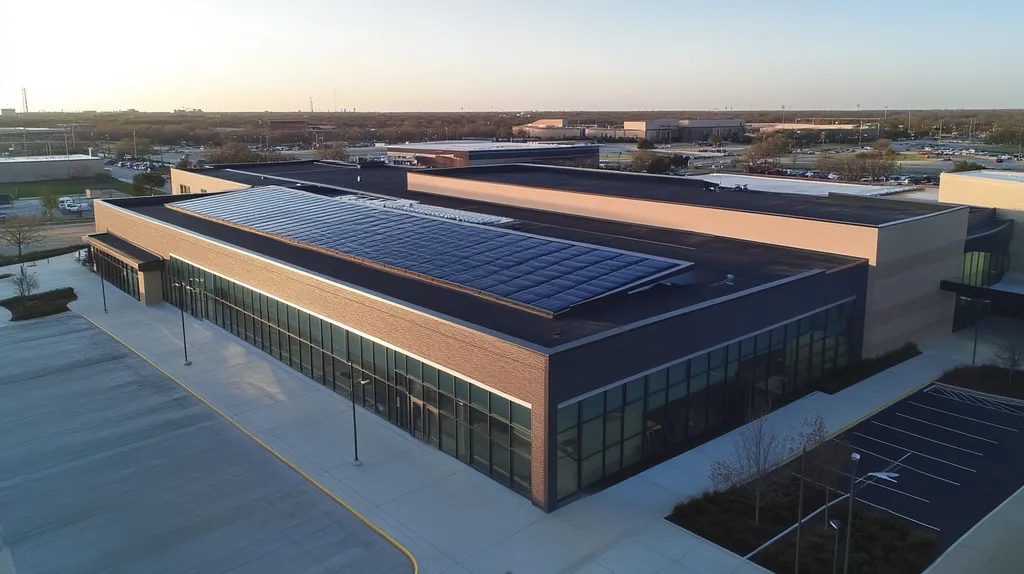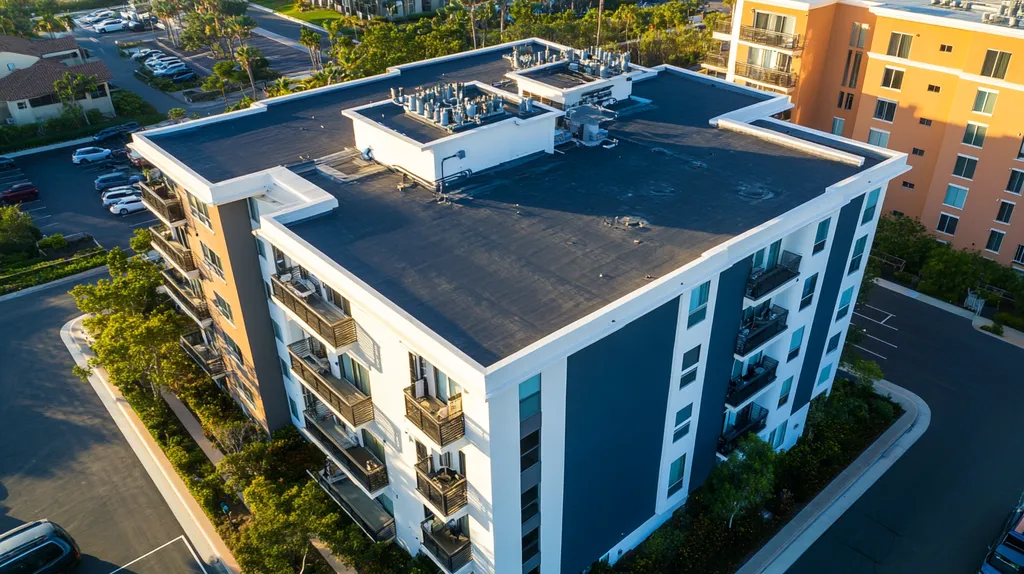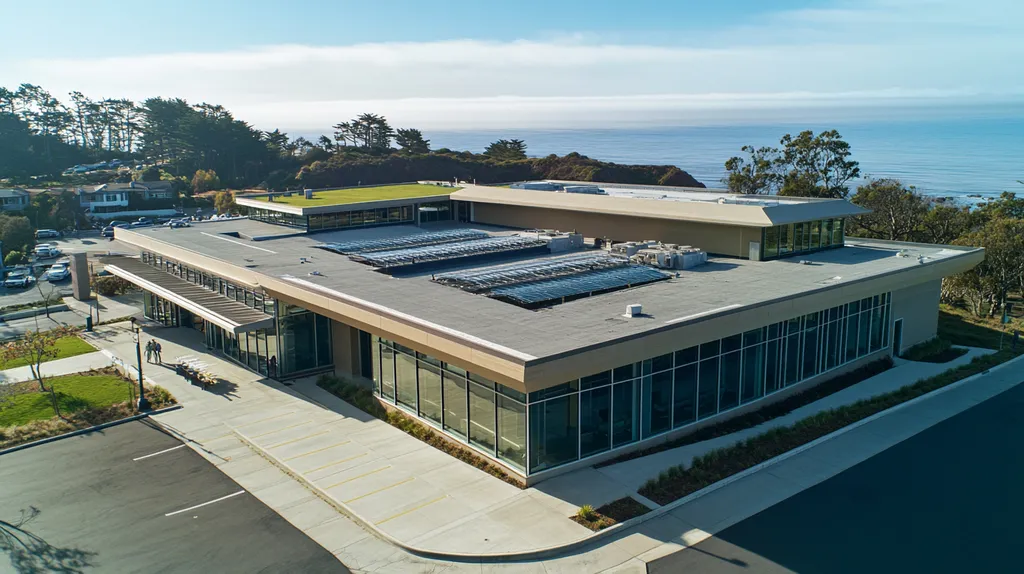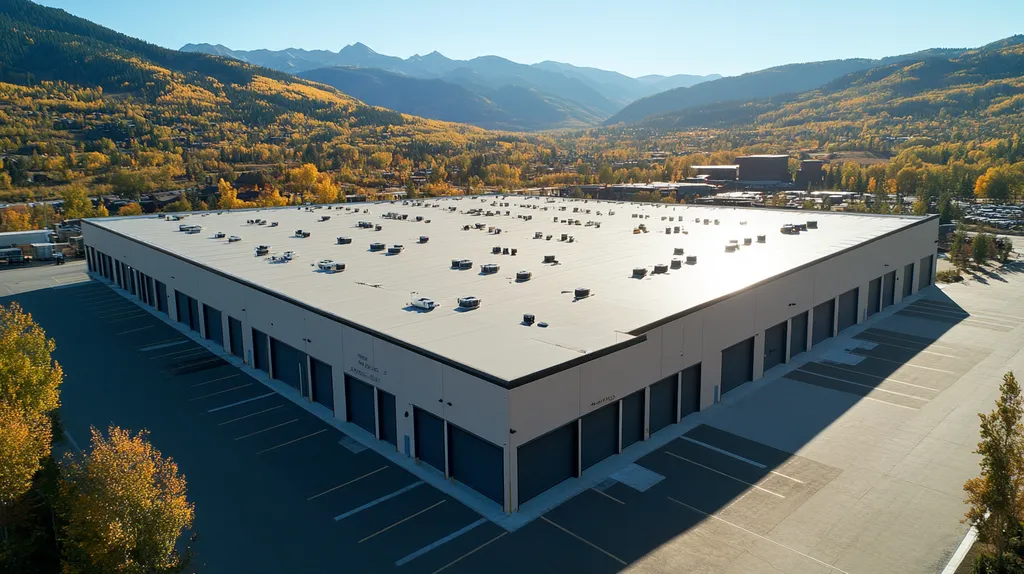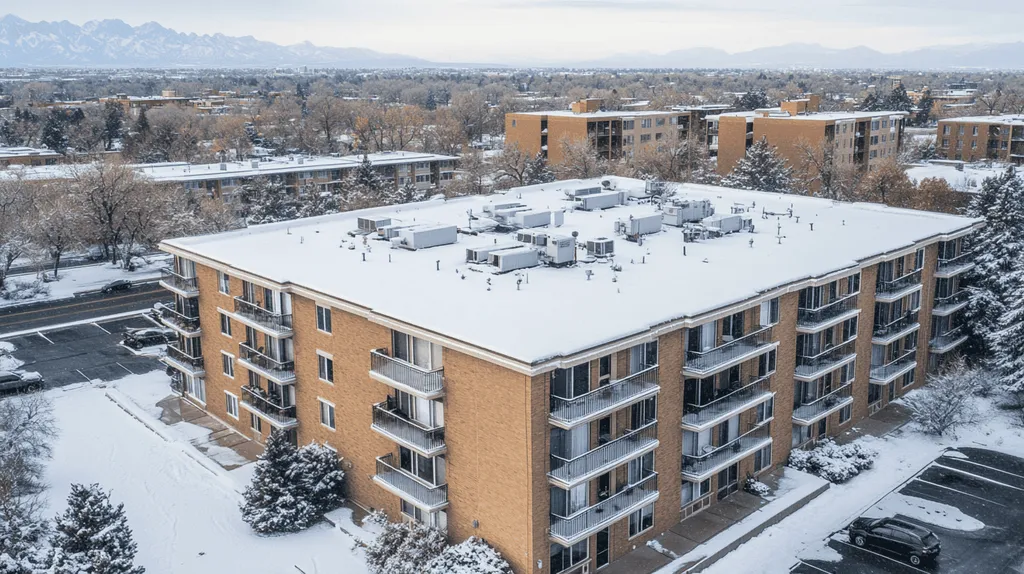Commercial property owners face mounting pressure to reduce energy costs and environmental impact, with buildings accounting for nearly 40% of U.S. energy consumption and carbon emissions.
Despite proven benefits of green roofing systems, including potential energy savings of up to 30% and significant reductions in stormwater runoff, widespread misconceptions continue to hinder adoption.
This analysis examines the reality behind common objections to green roofs while revealing evidence-based advantages that directly impact operational costs, building performance, and environmental sustainability.
SECTION 1: COMMON MISCONCEPTIONS
Many commercial property owners are often reluctant to invest in green roofing systems, primarily due to widespread misconceptions. Concerns about high initial costs, limited aesthetic choices, and perceived maintenance complexities can discourage potential adopters. However, by clarifying these issues, property owners can make informed decisions that benefit both the environment and their finances. This section tackles popular misconceptions surrounding green roofing systems and reveals their true value.
High Upfront Costs are Prohibitive
One of the most entrenched misconceptions is that green roofs are prohibitively expensive to install. Although the initial investment may be higher compared to traditional roofing, the long-term financial benefits often eclipse these costs. Significant savings arise from improved energy efficiency, reduced stormwater management expenses, and available tax incentives.
Studies, such as one from the National Research Council, indicate that green roofs can lower energy costs by up to 30%. Additionally, extending a roof’s lifespan helps avoid the expenses associated with premature replacements, leading to a more compelling financial outlook.
When evaluated holistically, the long-term gains can render green roofs more economically viable than conventional options. Property owners should consider not only the initial costs but also the benefits that accumulate over the life of the system.
Moreover, investing in green roofing can increase property value, attracting eco-conscious tenants and clients who prioritize sustainability. As businesses increasingly seek innovative solutions, this trend gains relevance in today’s commercial market.
Green Roofs are Aesthetically Limiting
Another prevalent misconception is that green roofs restrict aesthetic possibilities for buildings. On the contrary, green roofing systems offer versatility and can enhance architectural appeal. They transform underutilized rooftop spaces into vibrant green landscapes, tailored to complement various design styles.
Numerous urban developments have successfully integrated green roofs featuring native plants and inviting recreational spaces. These enhancements not only beautify the surroundings but also create pleasant environments for employees and visitors alike.
Incorporating greenery into urban landscapes has been demonstrated to improve air quality and mitigate the heat island effect, thereby enhancing aesthetic appeal overall. This strategy not only strengthens a building’s environmental credentials but also adds beauty and functional value.
Thoughtful plant selection and layout allow for customization that aligns with a brand’s identity. The result is an attractive feature that can elevate both reputation and customer experience.
Maintenance is Excessively Complex
Lastly, the notion that green roofs require excessive upkeep is a significant misconception. While these systems do require maintenance, it can be manageable and efficiently incorporated into existing facility management routines. Regular inspections and upkeep can be seamlessly integrated into daily operations.
Green roofing systems typically utilize drought-resistant plants that demand less water and lower maintenance compared to traditional gardens. Furthermore, many businesses opt to hire specialized service providers focused on green roof maintenance, reducing the burden on in-house teams.
With careful design and plant selection, these systems can achieve sustainability while remaining low-maintenance. Additionally, providing education on green roof care empowers facility managers to manage these systems effectively without unnecessary complexity.
Investing in training or service contracts for routine maintenance can yield substantial returns in plant health and system longevity. Ultimately, a well-maintained green roof not only enhances energy efficiency but also extends the roof’s lifespan, making the initial investment worthwhile.
SECTION 2: PRACTICAL IMPLICATIONS
The urgency to adopt green commercial roofing systems is heightened by surging energy costs and the escalating consequences of climate change. With buildings responsible for approximately 40% of U.S. energy use, the implications for property owners are profound. Embracing sustainable roofing solutions not only leads to lower utility bills but also enhances climate resilience. This section delves into critical benefits such as energy efficiency, urban heat island mitigation, and improved building insulation that solidify the case for green roofing systems.
Energy Efficiency and Thermal Regulation
Green roofing systems significantly boost energy efficiency by enhancing thermal regulation. With features such as reflective materials, these roofs reduce heat absorption, ultimately lowering cooling costs during hotter months.
This improved efficiency can translate into energy savings of up to 30% annually, allowing property owners to better manage their operational costs. Furthermore, energy-efficient roofs ease the burden on HVAC systems, extending their operational lifespan and decreasing maintenance needs over time.
As demands grow for facilities to reduce their carbon footprints, investing in energy-efficient roofing emerges as a vital strategy for modern commercial buildings. Enhanced thermal management not only benefits finances but also contributes to a healthier environment.
Urban Heat Island Mitigation
Urban areas suffer from the urban heat island effect, characterized by significantly higher temperatures compared to their rural surroundings. This issue causes increased energy consumption and harmful emissions, along with heat-related health risks.
Green roofing systems combat this phenomenon by absorbing sunlight and providing crucial insulation, effectively cooling neighboring urban areas. Research indicates that regions featuring substantial green roofs can experience temperature drops of up to 5°F relative to those with conventional roofing.
The benefits ripple outward, leading to reduced energy demands for air conditioning and improved outdoor comfort, enhancing the appeal of commercial properties. Moreover, this mitigation supports local biodiversity, fostering healthier ecosystems within urban settings.
By adopting green roofing solutions, property owners can proactively address the urban heat island effect, contributing to a more sustainable and livable urban landscape.
Enhanced Building Insulation
A key advantage of green roofing systems is their ability to improve building insulation. Utilizing layers of soil and vegetation, these roofs provide natural insulation against temperature fluctuations.
This enhanced insulation means less energy is needed to heat or cool the building, directly affecting operational budgets. For property owners, the reduced energy demand translates into significant cost savings over time.
Moreover, high-performance insulation increases a building’s marketability, as energy efficiency becomes an essential consideration for tenants and buyers. As demand grows, this can result in improved occupancy rates and potentially higher lease prices.
In summary, green roofing not only improves insulation but also plays a pivotal role in generating long-term value for commercial properties.
SECTION 3: COST OF MISINFORMATION
In the commercial roofing sector, misinformation can lead to costly decisions. Property owners frequently underestimate the long-term savings that green roofing systems offer, fixating instead on initial expenditures. According to the U.S. Department of Energy, energy-efficient roofs can save businesses up to 30% on utility bills. This section will explore the significant costs incurred from neglecting these long-term benefits, bypassing regulatory incentives, and misunderstanding environmental impacts.
Overlooking Long-Term Savings
Short-term thinking is a common pitfall for many property owners, who often equate upfront costs with overall value. This perspective is particularly misleading when it comes to green roofing systems, which generally provide substantial energy savings over time. Research shows that energy-efficient roofs can drastically reduce heating and cooling bills, often recouping initial investments within a few years.
Moreover, green roofs enhance insulation, thereby diminishing the need for HVAC maintenance and translating into additional cost savings. Property managers who disregard these long-term benefits risk seeing their operational costs grow over time. In reality, sustainable roofing options can serve as a financially savvy choice rather than an unnecessary expense.
Furthermore, investing in green roofing systems can significantly increase property value. With the growing demand for eco-friendly buildings in the rental market, real estate owners must understand that sustainable roofs can lead to higher occupancy rates and potentially elevated rental prices.
Ultimately, ignoring long-term savings not only drives up operational costs but also stifles the potential for growth and sustainability within the business.
Ignoring Regulatory Incentives
Overlooking regulatory incentives tied to green roofing systems can impose unnecessary financial burdens on property owners. Many local governments offer tax incentives, rebates, and grants aimed at encouraging sustainable construction practices. Failing to recognize these opportunities can result in significant lost savings that could otherwise offset the initial investments required for green roofs.
For example, numerous states provide financial incentives or access to low-interest loans specifically for installing energy-efficient roofing materials. Ignoring these options leaves property managers missing out on affordable solutions that enhance their buildings’ performance without straining their budgets.
Additionally, implementing green technologies may lead to reduced permitting fees, further mitigating financial pressures. Compliance with environmental regulations can also streamline the approval process for new projects, indicating that a lack of awareness about these incentives represents a critical misstep that could hinder profitability.
Thus, understanding and maximizing regulatory incentives is crucial for ensuring the financial viability of modern roofing decisions.
Misjudging Environmental Benefits
Misunderstanding the environmental advantages of green roofing can have significant repercussions for businesses. Beyond the immediate energy savings, green roofs play a vital role in stormwater management, helping to reduce flooding risks and combatting the urban heat island effect. Neglecting these factors can lead to environmental harm and higher liability costs for property owners.
Many companies fail to recognize that adopting sustainable practices can greatly enhance their public image. Today’s consumers are more eco-conscious than ever, frequently choosing to support businesses that prioritize sustainability. Disregarding the environmental perks of green roofs means missing opportunities to attract and retain customers, while also fostering brand loyalty.
Moreover, organizations committed to environmental stewardship may gain favor in competitive bids for contracts or project funding. Granting agencies and community partners often prioritize businesses that demonstrate a commitment to sustainability through their building practices.
As such, misjudging environmental benefits can diminish a company’s reputation and reduce its competitive edge, leading to missed opportunities in the marketplace.
SECTION 4: REALITY CHECK
As the demand for sustainability solutions intensifies, businesses must accurately assess the costs and benefits associated with green commercial roofing systems. Property owners often encounter hidden costs that can quickly escalate if not properly managed. At the same time, energy savings may fluctuate significantly in real-world scenarios. This section aims to provide a comprehensive overview of installation and maintenance costs, realistic energy consumption reductions, and illustrative case studies that underline the success of these systems.
Actual Installation and Maintenance Costs
Property owners may initially view green roofs as an expensive venture. However, it’s essential to understand the comprehensive costs to reshape this perception. Installation costs can vary significantly, depending on the design complexity and the materials selected.
While standard commercial roofs might range from $5 to $15 per square foot, green roofs typically begin at around $15 per square foot, with advanced designs costing more. Nevertheless, the long-term savings in maintenance and energy usage often counterbalance these initial expenses.
Ongoing maintenance is a crucial factor to consider in total expenditures, encompassing activities such as weeding, irrigation management, and regular health assessments of the vegetation.
Despite these maintenance needs, green roofs usually boast greater longevity and durability, often resulting in lower total lifecycle costs compared to traditional roofing methods. This perspective illustrates that initial costs can be outweighed by strategic long-term savings.
Real-World Energy Consumption Reductions
The potential for reduced energy bills through green roofing systems has garnered significant attention from facility managers. Research indicates that green roofs can decrease energy consumption by as much as 30%, primarily achieved through enhanced insulation and moderation of ambient temperatures.
During hot summer months, green roofs effectively absorb sunlight, preventing heat accumulation and significantly lowering air conditioning demands. In winter, they also function as insulators, retaining warmth and further reducing heating requirements.
Commercial properties such as factory buildings and warehouses particularly benefit from the energy savings associated with these roofs. The reduction in energy consumption directly correlates to lowered utility expenses, thereby enhancing the financial viability of the facility.
This substantial effect on energy bills underscores the practicality and economic rationale for incorporating green roofing solutions in commercial settings.
Case Studies of Successful Implementations
Real-world examples illuminate the effectiveness of green roofs. A notable case is the Milwaukee County Badger Meter facility, which integrated a green roofing system to reduce energy needs and create a lush green space. This implementation showcased noteworthy environmental and economic advantages.
An additional example is the green roof at Chicago City Hall, which achieved an impressive 50% reduction in energy costs following its installation. These success stories exemplify the real-world applicability of green roofing systems and their capacity to deliver favorable returns on investment.
Such instances provide a roadmap for other businesses aiming to reap similar benefits, signaling that investing in green roofing can yield significant energy savings while enhancing brand image.
Ultimately, these case studies demonstrate a viable pathway for property owners contemplating the transition to more sustainable roofing systems.
SECTION 5: EVIDENCE-BASED ALTERNATIVES
As the need for sustainable building practices intensifies, property owners must make informed decisions about their roofing systems. The right choices can greatly influence energy efficiency, stormwater management, and overall aesthetics. For example, green roofs not only help alleviate urban heat islands but also improve air quality, resulting in significant cost savings for businesses. It is essential to explore effective strategies such as selecting the right vegetation and soil, integrating green roofs with existing structures, and leveraging available incentives to maximize the benefits of green roofing.
Choosing the Right Vegetation and Soil
Selecting the right vegetation and soil composition is crucial for a thriving green roof. Native plants generally thrive in local climates, requiring less maintenance and water. For instance, drought-resistant species can significantly cut irrigation needs, especially in areas facing water scarcity.
Soil depth is equally important, as it impacts the health of the green roof ecosystem. Shallow soils are ideal for hardy plants like sedums, while deeper soils allow for a diverse range of vegetation, including grasses and low shrubs. This diversity not only adds visual appeal but also enhances biodiversity.
Conducting a thorough analysis of site conditions, including sunlight and wind exposure, enables property owners to choose the most suitable plant varieties. Such careful planning ensures sustainability and longevity, enhancing environmental benefits while supporting property value.
Utilizing effective irrigation systems, such as drip irrigation, can also promote plant health and efficiency. By merging sustainable practices with intelligent design, property owners can reap both ecological and economic rewards from their green roofs.
Integrating Green Roofs with Existing Systems
Integrating green roofs with existing roofing systems offers numerous advantages. Many buildings can support the added weight of soil and vegetation with minimal modifications. In some cases, reinforcements might be necessary to accommodate the additional load, which can bolster the roof’s strength and durability.
A well-integrated green roof can significantly improve energy efficiency by enhancing insulation, thus lowering heating and cooling costs. Studies show that green roofs can reduce rooftop temperatures, leading to decreased energy demands. As a result, property owners often experience lower utility bills.
Cooperating with roofing professionals during the integration process ensures that it adheres to local building codes and standards. This teamwork can produce innovative designs, incorporating functional areas alongside green spaces, benefitting both the environment and building occupants.
Effective planning should also address drainage and irrigation systems to avoid issues like water accumulation. A comprehensive integration approach allows property owners to create a sustainable roof that adds aesthetic and financial value while minimizing operational costs.
Leveraging Local and National Incentives
Utilizing available local and national incentives can significantly alleviate the financial burden of green roofing systems. Programs such as tax credits, grants, and rebates are often in place to encourage sustainable building practices. Many municipalities provide financial assistance for projects that enhance urban greening, recognizing the benefits of green roofs.
Local governments may offer guidelines highlighting the financial advantages of green roofs, including reduced stormwater management fees and utility bill discounts. Investigating these opportunities helps property owners align their investments with economic incentives, often resulting in higher returns.
Engaging with local government entities and sustainability organizations can reveal additional resources. Many regions have initiatives focused specifically on educating property owners about the financial benefits and assistance available for green roof installations.
Understanding and taking advantage of these incentives makes it feasible for property owners to adopt green roofing systems. This not only enhances the environmental performance of their buildings but also fosters community identity and resilience, contributing to a more sustainable future.
SECTION 6: TEST AND VERIFY
The adoption of green roofing systems by commercial property owners necessitates rigorous testing and verification processes. Poorly executed installations can lead to considerable financial setbacks and squandered resources. The U.S. Department of Energy states that proper assessments can improve energy efficiency by up to 20%. This section explores the importance of conducting feasibility studies, monitoring performance, and ensuring compliance with green building standards, all essential for making informed decisions.
Conducting Feasibility Studies
Before embarking on a green roofing project, conducting a feasibility study is essential. This process involves a thorough evaluation of the building’s structural integrity, local climate considerations, and potential ecological benefits. For example, a well-conducted study might uncover that a facility situated in a cooler climate could effectively leverage a green roof to enhance insulation during winter months.
Assessing the existing roofing conditions and determining the viability of renovations is equally important. Some buildings may not be structurally sound enough to support specific green systems, which underscores the necessity for careful planning. Owners who fail to undertake comprehensive assessments may end up investing in systems that do not deliver expected performance.
A feasibility study should also include a financial analysis to project potential returns on investment (ROI). Tools are available that enable property owners to calculate anticipated energy savings and other associated benefits from green roofs. This valuable data guides stakeholders in making evidence-based decisions regarding expenditures.
Ultimately, feasibility studies act as a guiding roadmap for navigating the complexities of transitioning to an effective green roofing system.
Monitoring and Evaluating Performance
After installing a green roofing system, continuous monitoring is critical to ensure optimal performance. Regular evaluations help identify issues such as water drainage problems or plant health. Research indicates that timely interventions can save property owners up to 30% in maintenance costs.
Advanced technology, including sensors and monitoring software, facilitates real-time analysis of vital metrics. By tracking energy efficiency and temperature regulation, property managers can gather actionable insights to refine their operational strategies, boosting both environmental and financial outcomes.
Establishing a structured reporting system for performance metrics encourages accountability and transparency. Regular assessments should align with the goals set during the initial feasibility study, ensuring that the green roof continues to fulfill its sustainability and efficiency promises.
In conclusion, diligent monitoring and evaluation form the backbone of sustained success for green roofing systems.
Ensuring Compliance with Green Building Standards
Compliance with green building standards is essential for property owners aiming to maximize the benefits of their investment. Standards such as LEED and Green Globes outline specific criteria that green roofs must meet. Following these guidelines ensures that the roofing system positively contributes to overall building sustainability.
It is crucial to stay informed about evolving regulations and standards, as these can vary by location. Neglecting compliance can result in penalties and may disqualify property owners from various financial incentives associated with green building practices.
Accurate documentation of compliance efforts is also vital for future audits and inspections. This includes detailed records of installation methods, ongoing performance evaluations, and any interventions made to rectify issues. Maintaining thorough documentation streamlines the compliance process and enhances accountability.
In summary, ensuring adherence to green building standards is critical for capitalizing on the long-term advantages offered by green roofing systems.
Looking Ahead
With buildings accounting for 40% of U.S. energy consumption and carbon emissions, the adoption of green commercial roofing systems has become an urgent imperative rather than a luxury.
Research demonstrates that properly implemented green roofs can reduce energy costs by up to 30% while extending roof lifespans by 200-300%.
The evidence clearly shows that common objections around cost, aesthetics, and maintenance complexity are largely based on outdated misconceptions rather than current market realities.
As regulatory pressures increase and energy costs continue to rise, property owners who delay transitioning to green roofing systems risk falling behind both financially and competitively.
The future of commercial roofing is unmistakably green – the only question is whether organizations will be leaders or followers in this inevitable transformation.
FREQUENTLY ASKED QUESTIONS
Q. Are commercial roofs too expensive to install?
A. While initial costs may be higher, green roofs offer long-term savings through energy efficiency, reducing overall operational costs. Additionally, tax incentives can further offset the initial investment, supporting a better financial outlook.
Q. How do green roofs improve energy efficiency in commercial properties?
A. Green roofs enhance energy efficiency by providing better thermal regulation, which lowers heating and cooling needs. This can lead to energy savings of up to 30% annually, effectively reducing utility costs and extending the lifespan of HVAC systems.
Q. What costs do property owners face from misinformation about industrial roofs?
A. Misinformation can lead to costly choices, such as overlooking long-term savings associated with energy-efficient systems. This shortsightedness can inflate operational costs and diminish potential property values as sustainable practices become more sought after in the market.
Q. What are the hidden costs of green commercial roofing systems?
A. Hidden costs may include ongoing maintenance and potential structural modifications to support the additional weight of the green roof. It is vital to account for these factors to avoid budget shortfalls and ensure long-term sustainability.
Q. How does vegetation selection affect the performance of green roofs?
A. Selecting appropriate vegetation enhances a green roof’s performance by ensuring compatibility with local climate conditions. Native and drought-resistant plants require less maintenance and irrigation, leading to a more sustainable and low-maintenance green roof environment.
Q. What is the importance of monitoring green roofing systems?
A. Regular monitoring is crucial for identifying and rectifying performance issues, ensuring the green roof operates effectively. These evaluations can enhance operational efficiency, prevent costly repairs, and optimize the benefits of the green roof over its lifespan.
Q. How do green roofs benefit commercial property value?
A. Green roofs can significantly enhance a property’s marketability by attracting eco-conscious tenants and buyers. As sustainability becomes increasingly essential, properties featuring green roofs can command higher occupancy rates and potentially increased rental prices.

